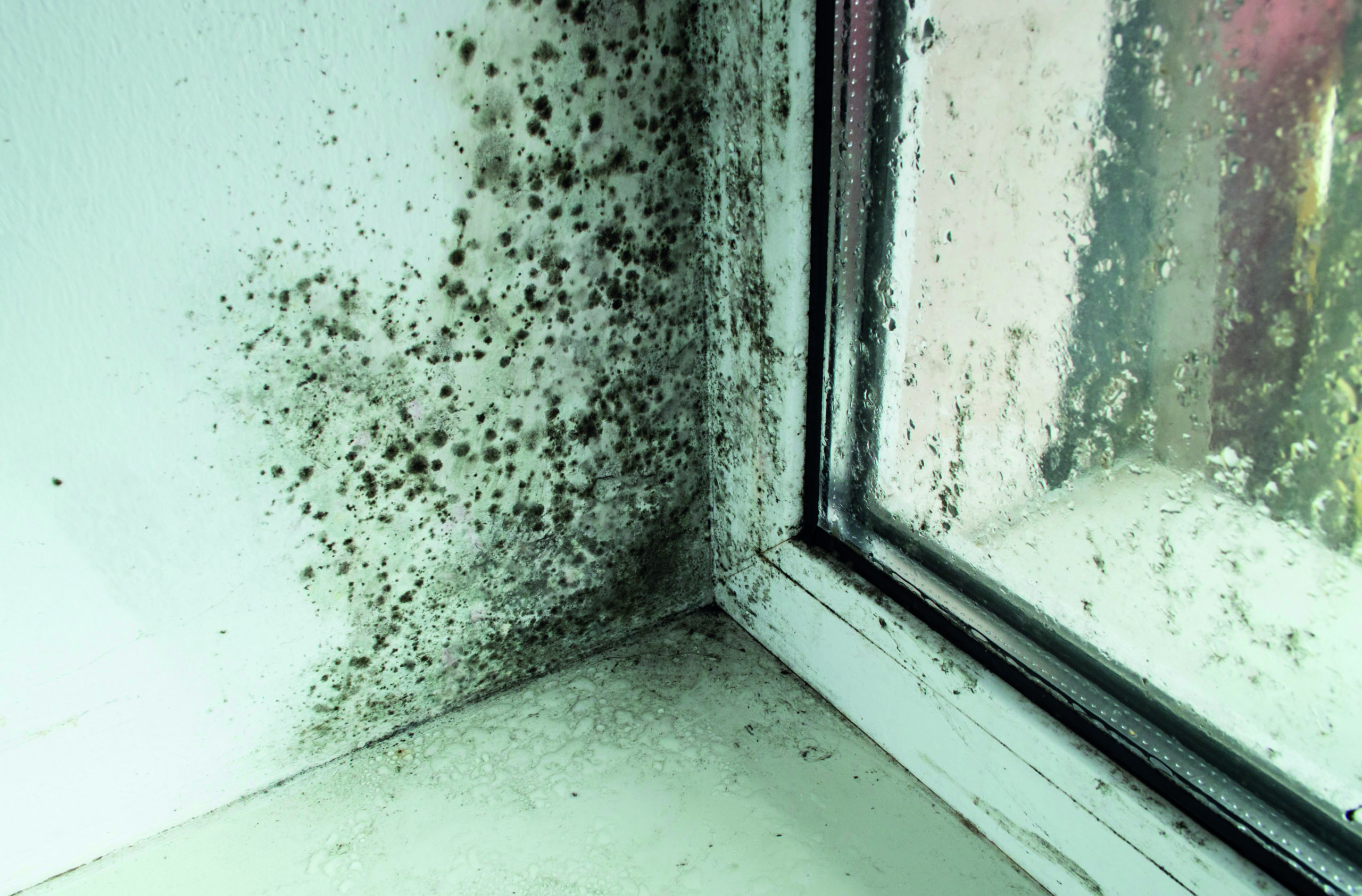
Condensation and mould growth are often the first visible indicators of inadequate ventilation in buildings, and it can have deadly consequences for occupants. In 2020, two-year-old Awaab Ishak died after prolonged exposure to black mould in his family’s one-bedroom flat in Rochdale. In response, the government introduced Awaab’s Law in July 2023, as part of the Social Housing (Regulation) Act, which forces social landlords to promptly investigate and eradicate mould. The new government is now proposing to extend the law to private landlords in the Renters’ Rights Bill.
Relative humidity (RH) is one of the key parameters in mould growth, and may be an indicator of ventilation and environmental conditions within the building. This article looks at the mechanics of humidity, mould growth, and what we can do about it.
The air’s capacity to hold water vapour is related to temperature. The warmer the air, the greater its capacity to hold moisture. The amount of moisture in the air is expressed as RH, a percentage of the maximum amount of water vapour the air can hold at a given temperature. Air is saturated when it cannot contain any more water vapour at the existing temperature; under these conditions it is said to have reached a RH of 100%. If the temperature of the air falls until saturation point – that is, it cannot hold any more water – this is known as the dew point. At this temperature, water vapour will be forced to condense out as liquid water.
As the RH of the air is governed by temperature, care should be taken when considering RH in isolation, as variations may be a result of varying temperature and not an increase in moisture. For this reason, it should be considered an indicator to the capacity of the air to hold water vapour, but not the actual volume of water within the air.
The Building Regulation Approved Document F Volume1: Dwellings highlights the risk of mould growth over time when RH is high, and sets limits of 65-85% RH over prolonged periods, ranging from a day to one month. These figures are considerably less than the 100% RH (dew point) that is required for surface condensation to occur. The presence of liquid water is not required for mould growth. With a suitable substrate and adequately high RH, mould spores will germinate.
In the past, condensation and mould growth have been dismissed as problems created by occupancy. However, the problem is often multifaceted and consideration of the entire building envelope, occupation density and style, as well as an understanding of building services, are needed to establish the root cause.
Addressing concerns at the pre-construction phase is comparatively easy, although the gap between designed and real-world performance can differ significantly. Addressing them when working within the confines of an existing structure presents a different set of challenges, where sometimes little is known about the structures, fabric thermal performance, and air infiltration rates.
Understanding how to balance moisture production, insulation, energy input (heat) and ventilation, combined with a good technical understanding of the science of air moisture and condensation, is key to eliminating condensation and mould. If there is no obvious excessive source of moisture, then adjustments will need to be made to heating and ventilation.
Ventilation strategies, moisture production and heat input are typically dependent on occupants’ input, and residents are often given little guidance on how to operate, balance and maintain these systems – sometimes leading to them being turned off by occupants. Turning off mechanical ventilation with heat recovery (MVHR) units will result in low air-exchange rates and poor indoor air quality, particularly in more airtight and thermally efficient properties.
Running battle
Twelve homes on a housing development in Yorkshire were fitted with MVHR systems, the performance of which attracted numerous complaints from the owners. Upon inspection, it was found that the vast majority of units had not been serviced in the six years that the properties had been built. This would not only void any product warranties, but also impede the performance of the system.
Regular servicing reduces running costs and ensures the system runs quietly and efficiently. If the occupant perceives that the unit is too noisy or expensive to run, the system will be switched off and not used.
Another issue with these homes was that the MVHR units (with vast quantities of inappropriate, performance-hindering flexible ducting) were greatly undersized for the size of the dwelling. They were capable of achieving the flowrates required in Approved Document F, but had to overwork to do so, with unacceptable noise levels. This led to occupants turning them off.
There is also widespread misunderstanding about the function of trickle vents, which are frequently shut over concerns about draughts and heat loss. A government report on ventilation2 showed that just 29% of trickle vents were open when a study was conducted into the ventilation performance across 80 new dwellings.
Trickle vents are an essential component of continuous mechanical extract ventilation systems, and increasingly so for natural ventilation systems with intermittent extractor fans. In the latter, the fan is a form of purge ventilation, removing high levels of moisture or pollutants, while background ventilators (trickle vents) provide ‘whole dwelling ventilation’.
The Future Homes Standard aims to make buildings more airtight, which leaves less margin for error when it comes to the provision of adequate ventilation. As ventilation strategies can often be disjointed, we need to encourage more collaborative working from the outset to prevent a rise in damp and mould problems.
About the author
James Berry is deputy chief executive at the Property Care Association
References:
- Appendix B, Approved Document F Volume 1: Dwelling 2021 HM Government bit.ly/3WD3evF
- Ventilation and indoor air quality in new homes, Ministry of Housing, Communities and Local Government, 2019, bit.ly/3M3UlGt
